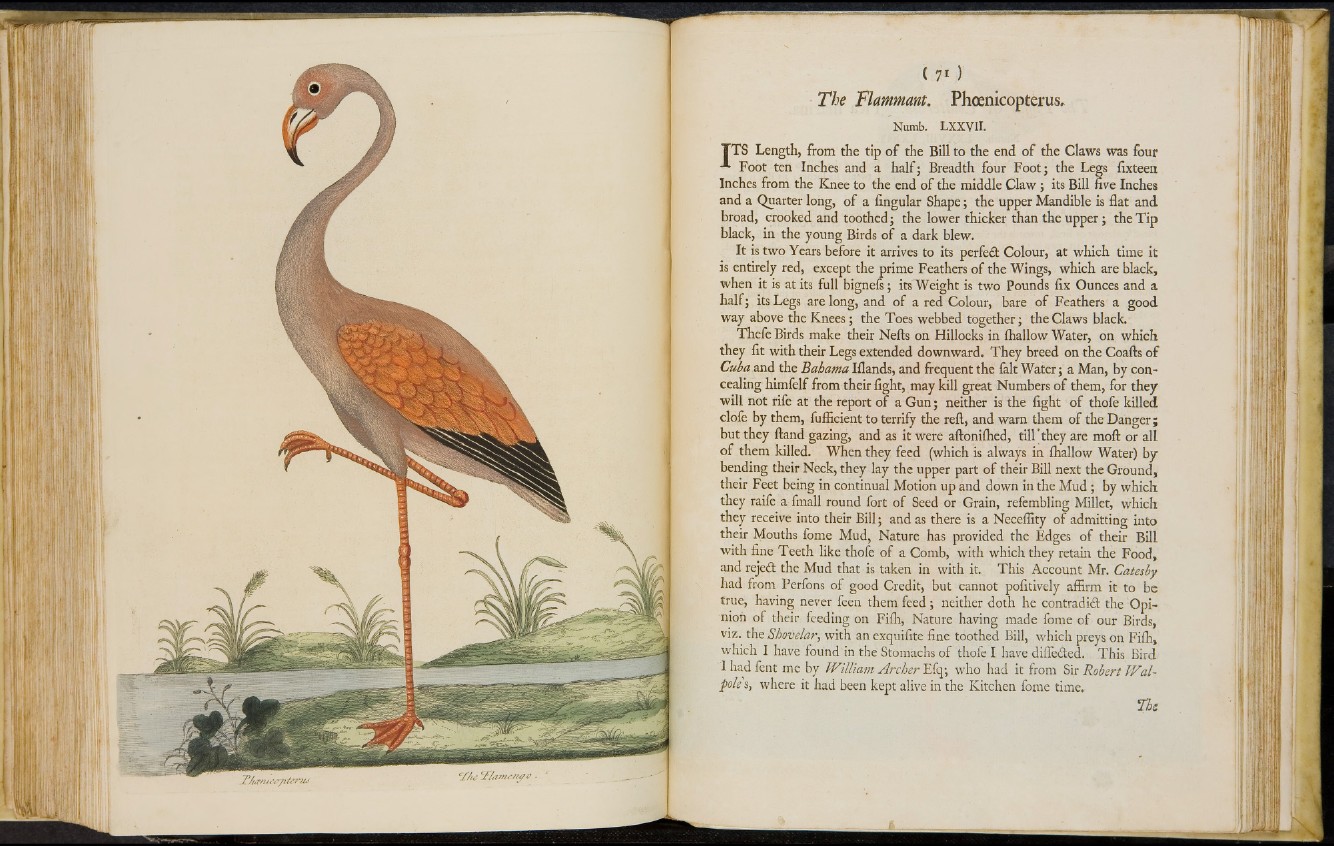
The Flammant. Phoenicopterus.
Numb. LXXVII.
TTS Length, from the tip of the Bill to the end of the Claws was four
Foot ten Inches and a half; Breadth four Foot; the Legs fixteen
Inches from the Knee to the end of the middle Claw; its Bill five Inches
and a Quarter long, of a lingular Shape; the upper Mandible is flat and
broad, crooked and toothed; the lower thicker than the upper; the Tip
black, in the young Birds of a dark blew.
It is two Years before it arrives to its perfedt Colour, at which time it
is entirely red, except the prime Feathers of the Wings, which are black,
when it is at its full bignels; its Weight is two Pounds fix Ounces and a
half; its Legs are long, and of a red Colour, bare of Feathers a good
way above the Knees; the Toes webbed together; the Claws black.
Thefe Birds make their Nefts on Hillocks in ihallow Water, on which
they fit with their Legs extended downward. They breed on the Coafts of
Cuba and the Bahama Iflands, and frequent the lalt Water; a Man, by concealing
himfelf from their fight, may kill great Numbers of them, for they
will not rife at the report of a Gun; neither is the fight of thole killed
dole by them, fufficient to terrify the reft, and warn them of the Danger;
but they Hand gazing, and as it were aftonilhed, till ’they are moft or all
of them killed. When they feed (which is always in ihallow Water) by
bending their Neck, they lay the upper part of their Bill next the Ground,
their Feet being in continual Motion up and down in the Mud; by which
they raife a fmall round fort of Seed or Grain, refembling Millet, which
they receive into their Bill; and as there is a Necefiity of admitting into
their Mouths fome Mud, Nature has provided the Edges of their Bill
with fine Teeth like thole of a Comb, with which they retain the Food,
and rejedt the Mud that is taken in with it. This Account Mr. Catesby
had from Perfons of good Credit, but cannot pofitively affirm it to be
true, having never feen them feed; neither doth he contradiit the Opinion
of their feeding on Filh, Nature having made fome of our Birds,
viz. the Shovelar, with an exquilite fine toothed Bill, which preys on Filh,
which I have found in the Stomachs of thofe I have difledted. This Bird
I had fent me by William Archer Efq; who had it from Sir Robert Walpole
s, where it had been kept alive in the Kitchen fome time.